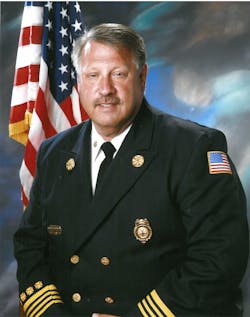On a family vacation to Mexico, I was awestruck while watching workers hanging off the side of an 11-story building under construction, with only a single rope to secure them. You would never see anything like that in the United States; there are too many safety regulations related to construction.
There is no doubt that it costs less to construct a building in Mexico than it does the United States. When you don’t have to pay for the safety equipment, safety managers, medical supplies, scaffolds, proper hoisting equipment, etc., there’s going to be savings. Just do a little research and you’ll see the construction-related death rate is far higher in Mexico than the United States. This contrast made me think of all the controversy around how we will build ambulances in the future.
Ambulance specs
Since 1974, the federal government has published the General Services Administration (GSA) ambulance standards called the KKK-A-1822 (A–F) purchasing specification. The federal government used this specification when buying ambulances. Or when an agency received a federal grant, they had to use this specification, which is commonly referred to as the “Triple K” ambulance specifications. Forty-two states have rules referring to the design of ambulances, and 30 of them rely on KKK-A-1822 specifications. Unfortunately, none of these federal specifications was designed with safety standards in mind.
Each year, EMTs and paramedics are killed in ambulance accidents, and countless others are injured. If you’re treating a patient while standing up in the back of an ambulance and there is an accident, there is a good probability that you are not seatbelted—and that can be dangerous.
The Triple K standard is scheduled to terminate in October 2016. It was extended once in 2014 for a two-year period. Back in 2014, when the Triple K was going to sunset, there was the NFPA 1917 Standard for Automotive Ambulances, which had been in place since 2012. This consensus document—which included fire, non-fire and ambulance manufacturer representatives on the technical committee when it was developed—described not only how an ambulance should be designed but also the safety considerations that should be incorporated into future ambulance designs. There was anticipation that states would adopt the NFPA 1917 standard when the Triple K expired.
Many non-fire EMS organizations did not like the standard, even though many of their representatives sat on the technical committee and voted for the final document after it went through the NFPA’s extensive standard development process, including public comments. (Note: Only a few of the 30 members on the Technical Committee for the NFPA 1917 standard had “fire department” attached to their titles.)
I was at the Joint National EMS Leadership Forum meeting when a proposal was made to ask the GSA to halt termination of the Triple K federal purchasing specification in 2014, and rather extend it another two years on the premise that some tweaking was needed of NFPA 1917 before states would adopt it. I saw this as a ruse since it was non-fire service EMS organizations pushing for the extension.
Sure enough, the Commission on Accreditation of Ambulance Service (CAAS) soon formed a committee to design ambulance specifications. The ambulance design standard that they eventually developed is called the CAAS Ground Vehicle Standard (GVS-2015).
Many in the fire service believe that NFPA 1917 was rejected by many of the non-fire EMS organizations because they believed that it was going to substantially raise the price of building a new ambulance. For example, if the seatbelt is not fastened, NFPA 1917 calls for visual and audible alarms to alert you to put your seatbelt on—a costly expense. The CAAS standard wants a sign posted telling you to fasten your seatbelt. NFPA 1917 specifies how much reflective striping and chevroning there should be on the ambulance. Under the CAAS standard, the buyer gets to specify striping and chevrons. If they don’t want any, they don’t have to have any—a cheaper option, of course. And the one that is hard for me to understand: NFPA 1917 originally regulated ambulances to no greater than 77 mph. That has now been removed, so if you want the ambulance to go 100 mph, it is permissible. In my opinion, there are more downgrades in the CAAS standard when compared to the NFPA 1917 standard.
Sacrificing safety?
What is the price of protecting the EMTs/paramedics and the patient? If the CAAS standard is any indication, it looks like we’re sacrificing the safety of our employees and patients for money.

Gary Ludwig
GARY LUDWIG has served in three fire departments over his career: St. Louis, Memphis, and Champaign, IL. His fire, EMS and rescue career spanned a total of 46 years, and he has been a paramedic for over 44 years. Ludwig served as president of the International Association of Fire Chiefs in 2019-20. He has a Master’s degree in Business and Management, has written over 500 articles for professional fire and EMS publications and is the author of seven books.
Connect with Gary
Email: [email protected]
Facebook: Gary Ludwig
Twitter: @ChiefGaryLudwig
Website: garyludwig.com





